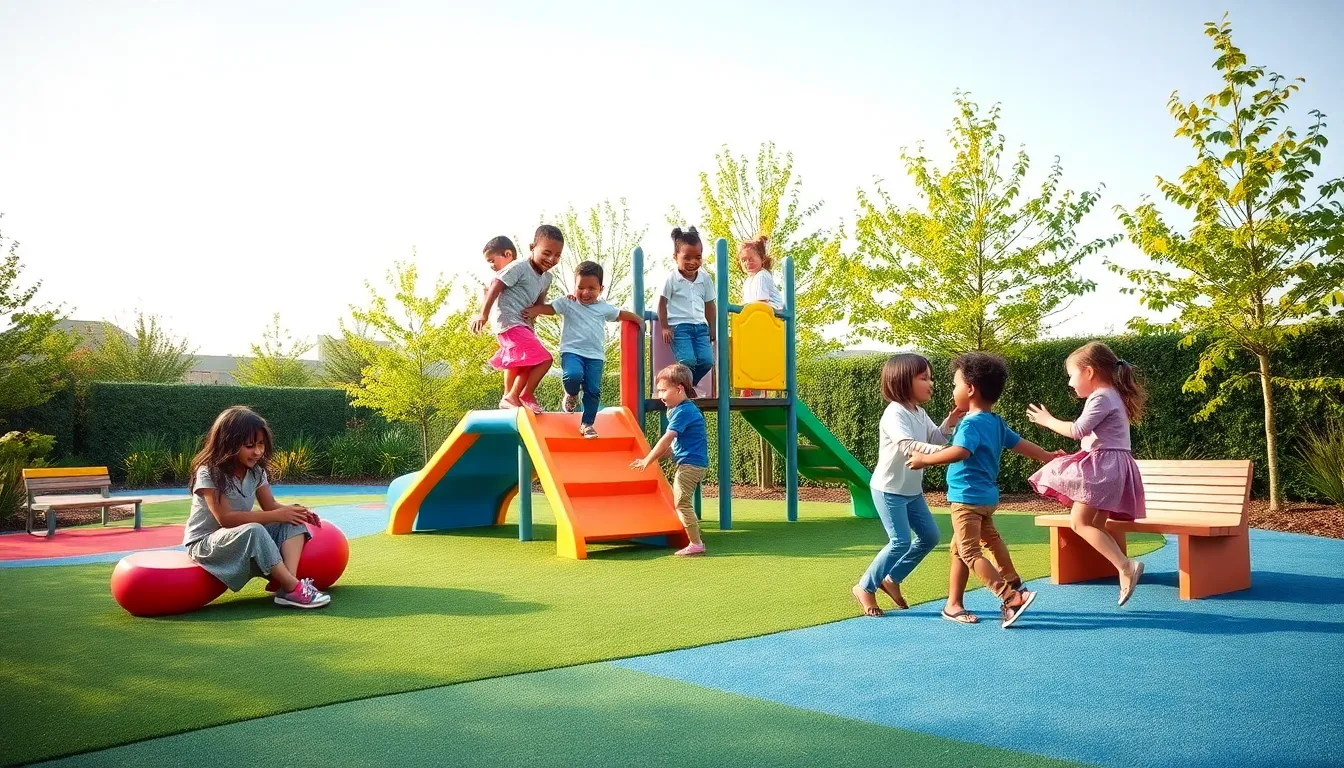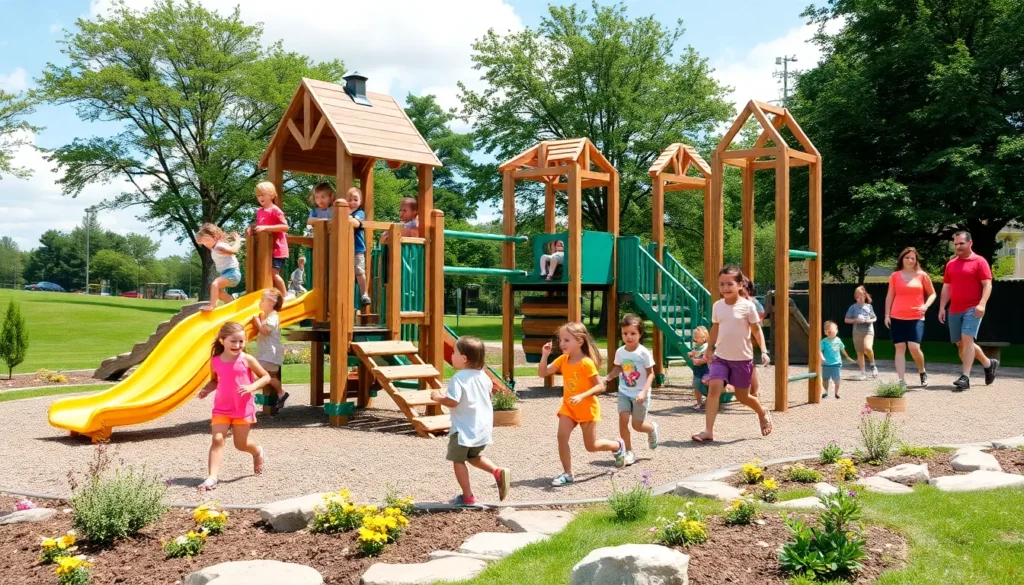In a world where screens seem to reign supreme, the idea of outdoor play spaces for early childhood may sound like a nostalgic relic of the past. But believe it or not, these spaces are not just a luxury: they’re an essential element for holistic development. Imagine a place where children can swing, climb, and explore, all while developing their physical, social, and cognitive skills. Sounds like a dream? Well, it shouldn’t be. With the right design and understanding, outdoor play can be a transformative experience for the little ones in your life. Let’s jump into the importance of these spaces and why every child deserves one.
Table of Contents
ToggleThe Importance of Outdoor Play in Early Childhood Development

Outdoor play is not merely an enjoyable way for children to pass the time: it’s a vital aspect of their development. Research consistently indicates that engaging in outdoor activities fosters physical health. It nurtures gross motor skills as children run, jump, and balance on various surfaces. These activities contribute to overall fitness and help combat childhood obesity.
Also, outdoor environments stimulate children’s senses. Nature’s textures, colors, and sounds provide a rich tapestry for sensory exploration. This sensory engagement enhances brain development and leads to improved cognitive functions, such as problem-solving and critical thinking. In essence, outdoor play is the ignition for lifelong learning.
Social skills bloom in parks and playgrounds, where children learn to share, cooperate, and communicate. They navigate relationships with peers, overcoming conflicts, and celebrate successes together. These experiences lay the groundwork for emotional intelligence, a critical component for success in life.
Benefits of Outdoor Play Spaces
The benefits of outdoor play spaces extend far beyond the immediate joy of running around. Firstly, they provide an opportunity for unstructured play, which is crucial for creativity. Children immersed in open environments often invent games and scenarios, fostering their imaginations.
Besides, outdoor play spaces combat the effects of stress and anxiety. Children exposed to natural settings experience lower cortisol levels and a greater sense of wellbeing. Considering the pressures of modern life, these benefits play a pivotal role.
Also, outdoor spaces encourage physical activity, which is essential for developing healthy habits early on. Engaging in play leads to physical strength, better coordination, and improved endurance. When children connect movement with fun, they’re more likely to maintain that activity into adulthood, setting them up for healthier lives.
Designing Effective Outdoor Play Spaces
Creating effective outdoor play spaces requires thoughtful design. Children need a variety of options that provide challenges without causing safety concerns. A well-designed space includes climbing structures, slides, and balancing beams that cater to different skill levels.
Incorporating versatile materials is crucial. Natural elements like logs, boulders, or even water features offer immersive play experiences that store-bought plastic equipment simply can’t match. These materials not only enrich the play experience: they also encourage children to interact with their environment.
In part, accessibility must be a priority. Play spaces should be welcoming for children of varying abilities, ensuring that every child can engage in play. Pathways should be smooth, and equipment should be designed for ease of access.
Types of Outdoor Play Spaces for Early Childhood
Outdoor play spaces come in various forms, each offering unique benefits. Community parks are often outfitted with playground equipment, seating areas, and open spaces for running and sports. These venues foster a sense of community and interaction among children and parents alike.
Preschool and nursery schools often benefit from dedicated play areas that are specifically designed to match the needs of younger children. These spaces typically include smaller equipment and enclosed areas to ensure safety while maximizing exploration.
Nature-based playgrounds are becoming increasingly popular. They incorporate natural materials and landscapes – think tree stumps, plants, and sand – encouraging children to engage with nature directly. These spaces help children develop a connection with the environment, laying the groundwork for future ecological stewardship.
Safety Considerations for Outdoor Play Areas
Safety is paramount when establishing outdoor play areas. All equipment should meet safety standards to minimize the risk of injury. For example, surfaces under climbing structures should consist of soft materials like mulch or rubber mats to cushion falls.
Regular maintenance is essential too. Checking for wear and tear ensures that risks are actively managed. Also, clear visibility from surrounding areas allows caregivers to supervise children effectively, adding another layer of security.
Besides, it’s beneficial to have guidelines for playtime. Teaching children about safe behavior and setting boundaries can prevent accidents and foster responsible play.
Incorporating Nature into Play Spaces
The incorporation of nature into play spaces not only enhances play experiences but also promotes environmental awareness. Natural elements can be seamlessly woven into the design, from flower beds to birdhouses.
Gardening activities, for example, can teach children about plant life cycles. As they plant seeds and nurture them, they gain an appreciation for nature and learn important life skills.
Plus, planting native trees and creating habitats support local wildlife. This not only beautifies the space but also offers children opportunities to observe nature in action, enriching their development and nurturing their innate curiosity.








